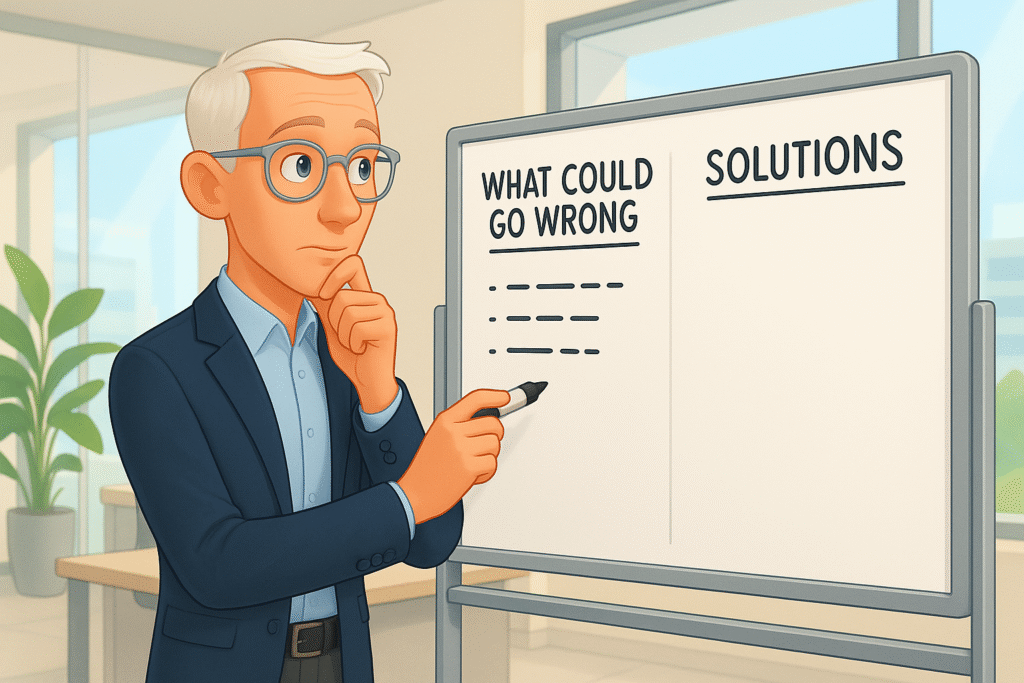
I have been doing something a little different in planning sessions.
Instead of the usual optimistic roadmapping, I open with a bit of an unusual request: “Before we talk timelines, let’s spend 20 minutes imagining how this could fail spectacularly.”
This isn’t an exercise in negativity. Not at all.
This wasn’t an exercise in negativity. It was “productive pessimism” — the deliberate practice of anticipating what could go wrong before it does.
The results were kinda remarkable.
One team realized their entire timeline hinged on a third-party API that has burned plenty of developers before.
Another discovered their success metrics were maddeningly vague.
A third acknowledged their core assumption about user behavior was supported by precious little evidence.
None of these insights would have surfaced in our normal “rah-rah, we’ve got this, go TEAM!” planning sessions.
The tech and product worlds share a dangerous positivity bias.
We celebrate optimistic leaders who push forward relentlessly.
We stigmatize the “negative” team members who raise concerns. (I’ve been called a “nay-sayer,” or worse, a few times.)
This creates a culture where potential problems remain unspoken until they become actual problems.
In I Need That, I contrast “hope-based planning” with “reality-based execution.” The best products emerge not out of blind optimism, but from clear-eyed assessment of potential pitfalls combined with creative strategies to address them.
The formal version of this practice is sometimes called a “premortem” — a technique where you imagine your project has already tanked, then work backwards to determine what caused it.
Unlike a post-mortem, which happens too late to save anything, a premortem helps you anticipate and prevent disasters.
Product Payoff: Video game veteran Nintendo’s wildly successful Switch console emerged directly from productive pessimism. After the commercial failure of the Wii U, leadership conducted a rigorous analysis of everything that could doom their next console.
This pessimistic exercise identified the core problem: gamers wanted both home and portable play. Instead of dismissing this as an impossible constraint, they embraced it, creating a hybrid device that has sold over 152 million units. By imagining failure first, Nintendo blazed the path to unprecedented success. (Again!)
Action for today: At your next project kickoff, dedicate 20 minutes to a premortem. Have each team member anonymously write down ONE specific reason the project might fail. Collect these “disaster scenarios,” then discuss mitigation strategies for each.
You’ll be amazed how many legitimate risks surface when people are given permission to voice concerns without being labeled as “negative.”
When has productive pessimism saved one of your projects?
Tap that reply arrow and share your experience with planning for problems before they happen.
Or reach out to my team of brilliant product marketing strategists at Graphos Product.
